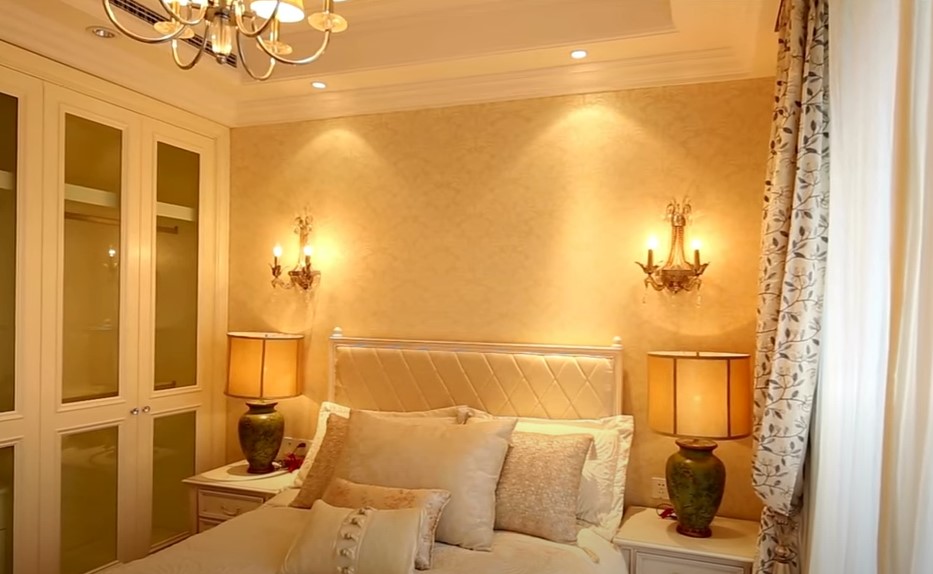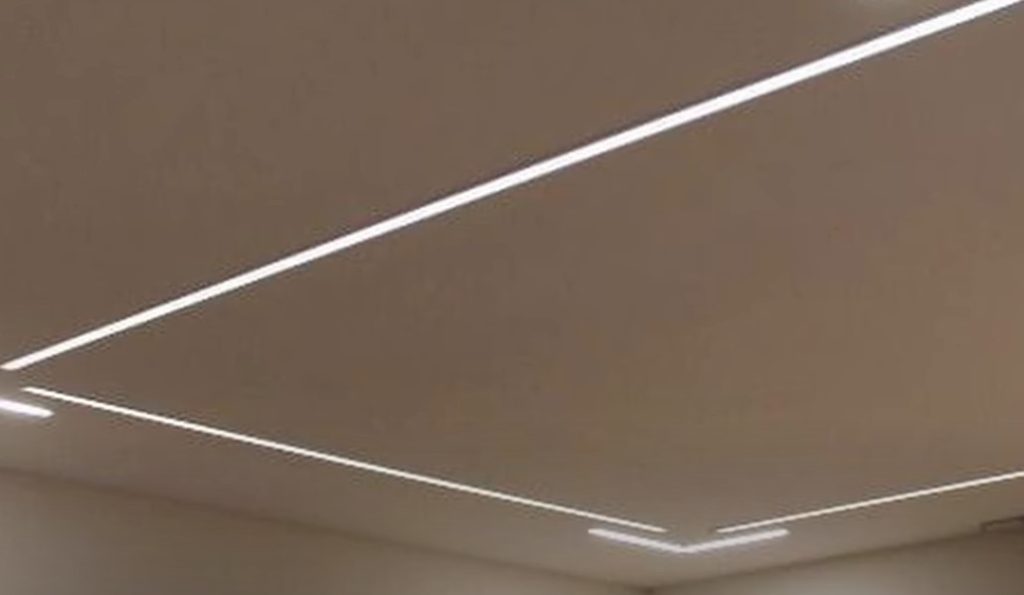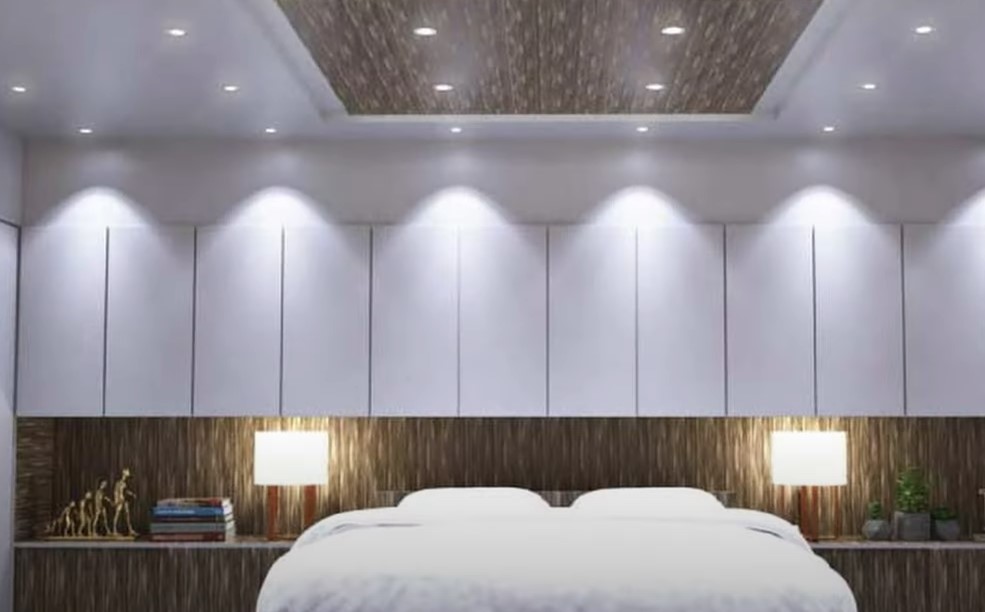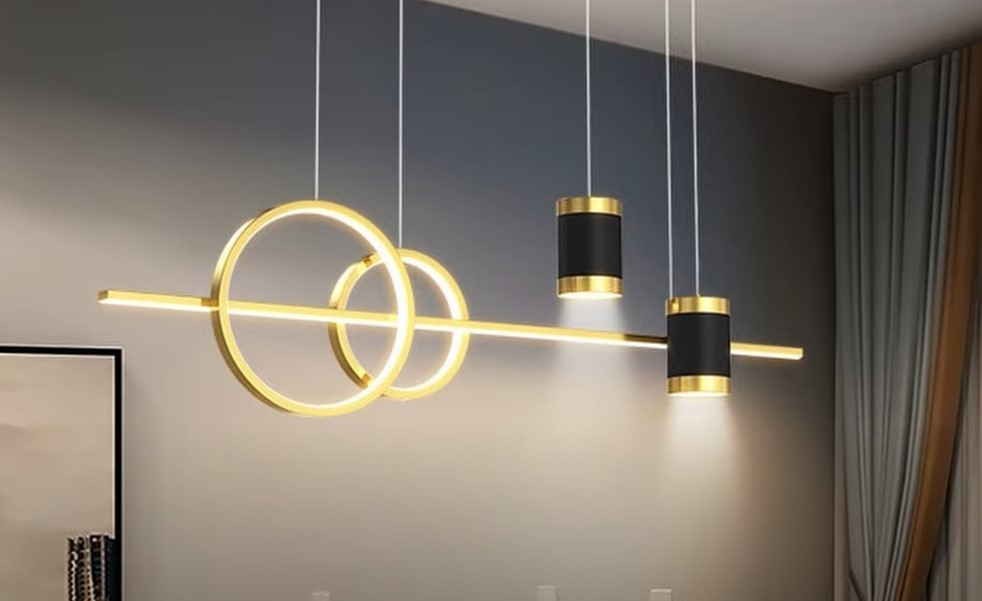LED Light Design For Living Room To Transform Your Room
Transforming your living room into a haven of comfort and style starts with thoughtful lighting. This comprehensive guide dives deep into LED light design for living room, covering everything from choosing the right bulbs to creating stunning ambient lighting schemes. We’ll explore different LED types, installation methods, smart home integration, and much more, empowering you…
Transforming your living room into a haven of comfort and style starts with thoughtful lighting. This comprehensive guide dives deep into LED light design for living room, covering everything from choosing the right bulbs to creating stunning ambient lighting schemes. We’ll explore different LED types, installation methods, smart home integration, and much more, empowering you to create the perfect atmosphere. Prepare to learn how to illuminate your space effectively, enhancing both its aesthetics and functionality.
LEDs, or Light Emitting Diodes, are semiconductor devices that convert electricity into light. Unlike incandescent bulbs which produce light through heat, LEDs produce light directly, making them significantly more energy-efficient. They work by passing an electric current through a semiconductor material, causing it to emit photons (light particles).
LED Light Design For Living Room | Creative Ideas
The market offers a
wide variety of LED bulbs. Understanding the differences is key to making the right choice. Key distinctions include:
- Color Temperature (Kelvin): Measured in Kelvin (K), this indicates the “warmth” or “coolness” of the light. Lower Kelvin values (2700K-3000K) produce warmer, more yellowish light, ideal for relaxation. Higher values (5000K-6500K) produce cooler, bluer light, often preferred for task lighting.
- Color Rendering Index (CRI): CRI measures how accurately a light source renders the colors of objects compared to natural sunlight. A higher CRI (above 80) is generally better for accurate color representation.
- Lumens: This measures the brightness of the light output. Higher lumens mean brighter light.
- Dimmability: Some LEDs are dimmable, allowing you to adjust their brightness, while others are not.
Related Article: Dining room ideas with LED light
Designing Your Living Room Lighting Scheme

Ambient Lighting: Setting the Mood
Ambient lighting provides overall illumination for the room. Recessed lighting, ceiling fixtures, and floor lamps are commonly used to create a soft, diffused glow. Consider warm-white LEDs (around 2700K) for a cozy atmosphere.
Task Lighting: Focusing on Specific Areas
Task lighting is crucial for activities like reading or working. Desk lamps, pendant lights above kitchen islands, or strategically placed spotlights can provide focused illumination. Cooler-white LEDs (around 4000K) are suitable for task lighting, ensuring clarity and visibility.
Accent Lighting: Highlighting Features
Accent lighting highlights architectural details, artwork, or other decorative elements. Track lighting, picture lights, or LED strip lights can be used to create dramatic effects and add visual interest. Experiment with different color temperatures and intensities to achieve the desired impact.
Choosing the Right LED Bulbs for Your Living Room
Factors to Consider When Selecting LEDs
When choosing LED bulbs, consider the following factors:
- Wattage Equivalent: LED wattage is different from incandescent wattage. Pay attention to the lumen output rather than the wattage.
- Bulb Shape and Size: Choose bulbs compatible with your existing fixtures.
- Dimmability: Ensure compatibility with your existing dimmer switch, if applicable.
- Budget: LEDs range in price. Consider your budget and choose bulbs that offer a good balance of quality and affordability.
Energy Efficiency and Cost Savings
LEDs are significantly more energy-efficient than traditional incandescent bulbs, consuming far less electricity to produce the same amount of light. This translates to lower energy bills and a smaller carbon footprint. The initial investment in LEDs is often quickly recouped through reduced energy consumption.
Installing LED Lighting in Your Living Room

DIY Installation vs. Professional Help
Many LED lighting installations are straightforward DIY projects. However, for complex installations or if you are uncomfortable working with electricity, it’s advisable to hire a qualified electrician. Safety should always be your top priority.
Safety Precautions During Installation
Always turn off the power to the circuit before working with electrical wiring. Use appropriate safety gear, such as insulated gloves and tools. If you’re unsure about any aspect of the installation, seek professional help.
Smart LED Lighting and Home Automation

Integrating Smart Bulbs into Your Living Room
Smart LED bulbs offer advanced features like remote control, color-changing capabilities, and scheduling options. Popular smart home systems like Philips Hue, LIFX, and Google Nest offer a wide range of smart LED bulbs and accessories.
Benefits of Smart LED Lighting
Smart LED lighting provides unparalleled control and convenience. You can adjust lighting levels, colors, and schedules remotely using a smartphone app or voice assistant. This can enhance energy efficiency, create personalized lighting scenes, and automate lighting tasks.
LED Light Design Styles for Different Living Room Aesthetics
Modern Minimalist Lighting
Modern minimalist & cute living rooms LED lights benefit from clean lines and simple fixtures. Recessed lighting, sleek pendant lights, or linear LED strip lights create a sophisticated, uncluttered look.
Traditional Living Room Lighting
Traditional living rooms often incorporate ornate chandeliers, table lamps with fabric shades, and wall sconces. Warmer-toned LEDs complement this style, creating a warm and inviting atmosphere.
Bohemian Living Room Lighting
Bohemian styles embrace eclecticism and color. Consider string lights, colorful pendant lights, or Moroccan-style lanterns to add personality and texture. Experiment with different color temperatures to create a vibrant and energetic atmosphere.
Choosing the Right Color Temperature for Your Living Room

Warm White vs. Cool White LEDs
Warm white LEDs (2700K-3000K) create a cozy and inviting atmosphere, ideal for relaxation and socializing. Cool white LEDs (5000K-6500K) provide brighter, clearer light, suitable for tasks and areas requiring greater visibility.
Impact of Color Temperature on Mood
The color temperature of your lighting can significantly impact the mood and atmosphere of your living room. Warm-toned LEDs can promote relaxation, while cooler-toned LEDs can enhance alertness and focus. Experiment to find the perfect balance for your preferences.
Related Article: Black room ideas with LED light
Common Mistakes to Avoid When Designing LED Lighting
Overlighting or Underlighting Your Living Room
Proper lighting involves achieving a balance between adequate illumination and avoiding excessive brightness. Overlighting can be harsh and uncomfortable, while underlighting can make the room feel dark and uninviting. Consider layered lighting approaches for optimal results.
Ignoring Natural Light Sources
Maximize the use of natural light during the day. Strategic placement of furniture and window treatments can help to enhance natural light penetration and reduce reliance on artificial lighting.
Maintenance and Lifespan of LED Bulbs
How Long Do LED Bulbs Last?
LED bulbs have a significantly longer lifespan than incandescent or halogen bulbs, lasting for 25,000 hours or more. This reduces the frequency of bulb replacements, saving you time and money.
Cleaning and Maintenance Tips
Regularly dust or wipe clean LED bulbs to maintain optimal light output. Avoid touching the bulb’s surface directly, as fingerprints can affect its performance. For delicate fixtures, consult the manufacturer’s instructions for cleaning.
Cost Comparison: LED vs. Incandescent Bulbs
Long-Term Savings with LED Lighting
While the initial cost of LEDs may be higher than incandescent bulbs, the long-term savings in energy costs far outweigh the upfront investment. The extended lifespan of LEDs also reduces replacement costs, making them a cost-effective choice in the long run.
Calculating Return on Investment (ROI)
The ROI of switching to LED lighting can be calculated by comparing the cost of purchasing and operating LED bulbs with the cost of using traditional incandescent bulbs over their respective lifespans. The energy savings typically result in a significant positive ROI within a short period.
LED Lighting and Your Overall Home Decor
Coordinating LED Lighting with Your Interior Design
Your LED lighting should complement your overall home decor. Choose fixtures, colors, and styles that enhance the aesthetic appeal of your living room. Consider the existing furniture, wall colors, and decorative elements when making your lighting choices.
Creating a Cohesive Lighting Scheme
Create a cohesive lighting scheme by using consistent styles and color temperatures throughout your living room. This creates a sense of harmony and visual unity. Layered lighting approaches – combining ambient, task, and accent lighting – can contribute to a unified and effective lighting scheme.
Frequently Asked Questions
What are the benefits of using LED lights in my living room?
LEDs offer numerous benefits: superior energy efficiency leading to lower electricity bills, longer lifespan reducing replacement frequency, diverse color temperature options for varied moods, and compatibility with smart home systems for enhanced control and convenience.
How do I choose the right color temperature for my living room?
Consider the desired ambiance. Warm white (2700K-3000K) is ideal for relaxation, while cool white (5000K-6500K) is better for tasks. Experiment to find your preference.
Can I install LED lights myself?
Many installations are DIY-friendly, but for complex wiring or if you’re uncomfortable working with electricity, professional help is recommended.
How much will it cost to switch to LED lighting?
The initial cost is higher than incandescent bulbs, but long-term savings in energy costs and reduced replacements make it a cost-effective solution.
Are smart LED lights worth the investment?
Smart LEDs offer unparalleled control and convenience, allowing remote adjustments, scheduling, and integration with other smart home devices. The added cost is often justified by the enhanced features and convenience.
How do I clean my LED lights?
Dust or gently wipe with a soft cloth. Avoid direct contact with the bulb’s surface. Consult manufacturer instructions for delicate fixtures.
Final Thoughts
Designing your living room with LED lighting is a rewarding process that dramatically impacts the ambiance, functionality, and overall aesthetic appeal of your space. By understanding the different types of LEDs, their features, and the principles of layered lighting, you can create a truly personalized and inviting atmosphere. Remember to consider your budget, desired ambiance, and existing décor when making your choices. The investment in quality LED lighting will not only enhance the beauty of your living room but also contribute to significant long-term cost savings and increased energy efficiency. Start exploring the various options available and transform your living room into the perfect space to relax, entertain, and enjoy life’s precious moments. Consider exploring smart LED options for even greater control and personalization of your living space.

